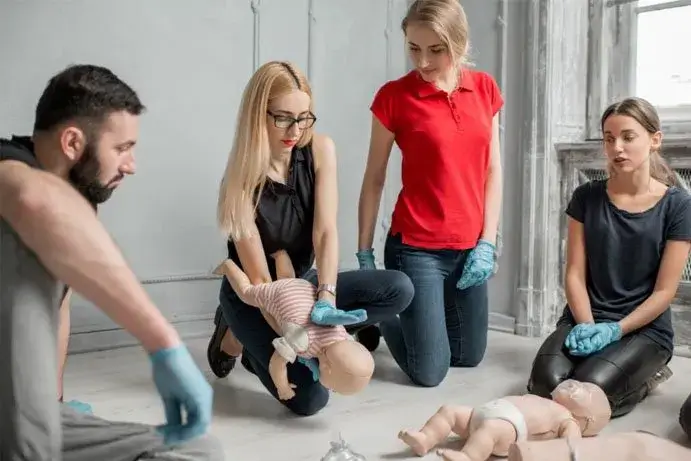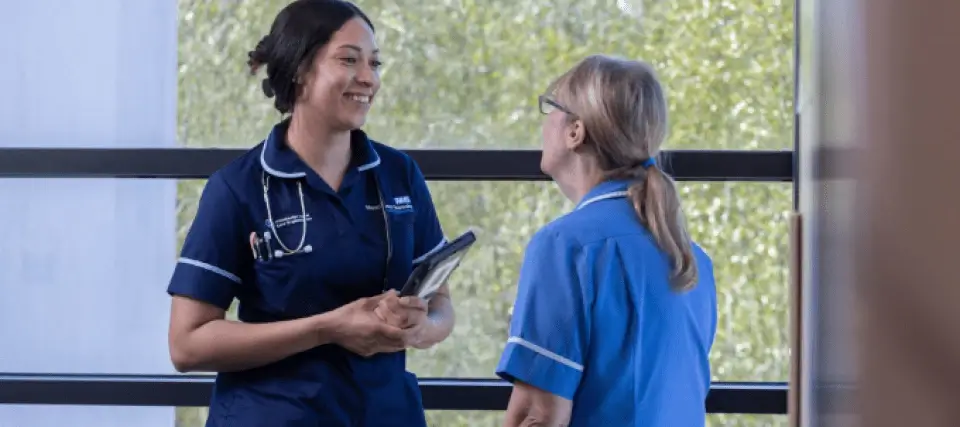Paediatric first aid stands rather separate from its grown-up cousin. Children, it turns out, are different creatures entirely. Their bodies react in unpredictable ways, their symptoms escalate rapidly, and your approach must shift accordingly. Think of it like swapping a chef’s knife for a paring knife, both cut, but precision matters more for little fingers.
When you’re dealing with the under-eights, you will find that size, stage of development, and medical histories play a larger part than you might expect. Even common medicines safe for adults can have outsized effects in small bodies.
Any training in paediatric first aid drills you in scenarios unique to children: choking on grapes, poisoning with household cleaners, sudden allergic reactions that come out of nowhere. You need a grasp of what’s typical, and what heads straight for urgent. More than anything else, you need an adaptable frame of mind. If you approach children’s emergencies intending to apply one-size-fits-all solutions, you’ll come up short.
You might discover that even your hands move differently when you’re faced with a toddler’s distress, gentler, more cautious. And the way you explain things shifts too, peppered with reassurance, a promise of a favourite teddy just around the corner.
Common Childhood Emergencies and How to Respond
You’re carrying a cup of tea into the next room. There’s a crash. Something has gone awry. Childhood emergencies arrive with plenty of warning or none at all. The range is surprising:
- Falls from beds, stairs, or playground equipment
- Choking on small toys or food
- Burns from hot drinks or ovens
- Cuts and scrapes that bleed more than you’d think
- Sudden fevers that spike without mercy
Consider choking. It’s a top concern, small objects and food regularly conspire against you. The advice for children is distinct: support the child face-down along your thigh, deliver up to five back blows between the shoulder blades. If that doesn’t work, try chest thrusts (like abdominal thrusts, but adapted for little ones). You might be surprised how strong your own nerves feel when you have clear instructions to follow.
Burns? Place the affected area under cool running water for at least ten minutes. No butter, no creams. A simple step can determine whether there’s minimal scarring or a visit to A&E. If a child knocks out a tooth, place it in milk, not water, and seek dental help. Sometimes the most effective aid feels instinctive: other times you will find that it runs counter to what you’d expect. Thinking ahead about likely scenarios allows you to respond from knowledge rather than panic. Would you reach for a bandage or a phone? That depends entirely on what you know.
Essential Paediatric First Aid Skills and Techniques
Let’s get practical. You can read books, watch videos, but nothing quite beats hands-on skills honed over time. There are techniques that should live in your muscle memory, ready for when you need them:
CPR for Children and Babies
Children’s CPR isn’t a carbon copy of the adult routine. Use just one hand for chest compressions on a child. For infants, use two fingertips. The rhythm, 30 compressions, two gentle breaths, will stick with you if you practise. If you haven’t already, seek out a course with real dummies. You can’t fake confidence, but you can build it.
Managing Bleeding
Apply pressure with whatever comes to hand: a clean towel, your child’s favourite dinosaur T-shirt. Elevate the wound if the child can be comforted into it. If the bleeding won’t stop after ten minutes, it’s time for extra help.
Dealing with Allergic Reactions
Spotting an allergy in a child is like catching smoke, rashes, swelling, difficulty breathing, sometimes all at once. If your child carries an adrenaline auto-injector, you should know where it is, and you should practise the action regularly. The best first aid is often rehearsed before it’s ever needed.
Treating Head Injuries
Children bump heads, a universal truth. The trick is watching for changes: unusual drowsiness, persistent vomiting, confusion. Provide ice wrapped in cloth, monitor closely, and trust your instincts. If they fall unconscious, seek urgent care. You will find that your attention to detail makes the difference.
When to Seek Professional Medical Help
The boundary between home management and calling for help might feel blurry, especially when emotions run high. In the case that you ever feel unsure, you’re rarely wrong to reach for professional guidance.
If a child stops breathing, collapses, or seizes and doesn’t recover quickly, dial 999 immediately. Difficulties with breathing that last longer than a few moments, persistent pain, or bleeding that soaks through dressings are all red flags.
There’s also the less dramatic, but equally crucial: burns that blister or spread, fevers unresponsive to paracetamol, allergic reactions affecting the face or mouth. In the middle of the night, trust your gut. Children deteriorate rapidly, it’s part of the peculiar cruelty of paediatrics. And if the child is quiet, floppy, or strangely withdrawn, trust your inner voice, if not the official symptoms.
Prompt action, guided by caution, can make all the difference. If in doubt, you will find that emergencies are never made worse by a little extra vigilance.
Preparing for Emergencies: Building a Paediatric First Aid Kit
You might have a first aid bag tucked under your sink. But how many of those items would you use on a child right now, without thinking twice? A paediatric kit has its own rhythm, its own heartbeat. Include:
- Adhesive plasters in multiple sizes, themed if you can, for small victories
- Sterile gauze pads and bandages
- Saline solution for cleaning eyes or wounds
- Digital thermometer (mercury thermometers belong to the past)
- Child-friendly painkillers (paracetamol, ibuprofen) with clear instructions
- Blunt-ended scissors and tweezers
- Allergy medication, if advised by your GP
Check regularly for out-of-date medicine. Maybe you’ll add your own touches, mini torch, distraction stickers, a comforting toy. When you pack for an emergency, you’re really packing for reassurance. Would you rather scramble for what you need, or have it to hand? Preparation is the quiet twin of clear thinking.
Legal and Ethical Considerations in Paediatric First Aid
Paediatric first aid sits in the realm of both action and responsibility. You might act out of instinct, but the law expects you to act reasonably, too. In the UK, you are protected by the principles of the Social Action, Responsibility and Heroism Act 2015, so long as you make decisions in good faith. Always seek consent where possible, explain to a child what you’re doing, and to the parent or carer if present. Sometimes, though, you might be faced with a lone child in immediate danger. Acting to save life always trumps inaction for fear of litigation.
Keep a mental note of allergy information, that handful of scribbled notes on fridge doors can prove lifesaving. Confidentiality matters, even when stress runs high. Thinking about your values, the child’s dignity, and your responsibilities shapes your first aid response as much as any training session ever could.
Wrapping Up
Paediatric first aid probably won’t feature on your hobby list, yet it threads quietly through family life, school halls, playgrounds, and supermarkets. You bring your own calm, your own willingness to act. That’s what matters most, more than any check-list or stock of plasters.
You will find that a little training goes a very long way, and that readiness always outweighs regret. Next time you hear laughter turn sharp, or a silence stretches too thin, you will know exactly where your strengths lie. If there’s one thing to take away, let it be this: every ordinary moment offers the chance to prepare for the extraordinary. Should you seize that chance? Absolutely.




